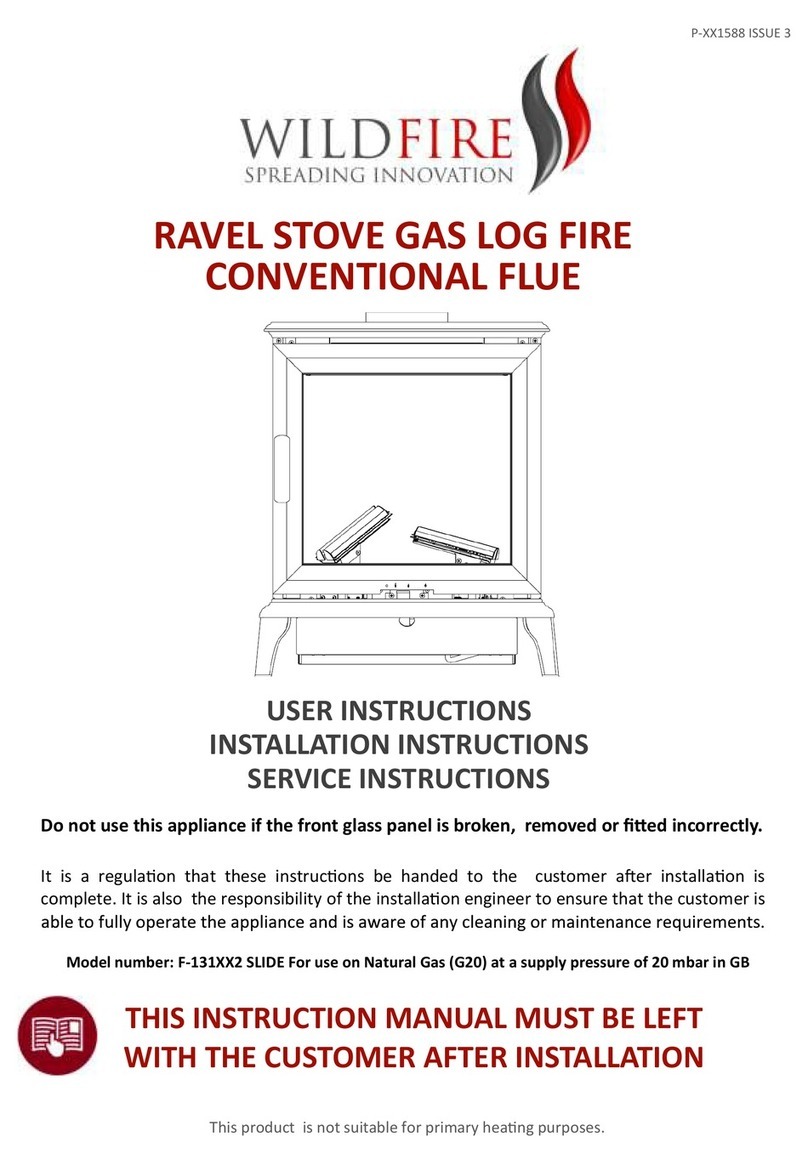
9
Floor protection shall also be used under the stove pipe and must extend 2”
beyond either side of the pipe.
CAUTION: First install a non-combustible stove base and/or wall shielding to
provide a safe underlayment for ceramic tile. Tile must not be used as the sole
form of thermal protection due to its ability to conduct significant heat to
combustible materials to which it may be directly attached. Ceramic tile shall be
incorporated into a hearth design Uonly as a decorative surface treatment.U
Plastics, fiberglass reinforced plastics, wood, or paper products are combustible
and must not be used.
Clearances to Adjacent Combustible Materials....
Three basic requirements determine the clearance values necessary for the
stove’s installation. Failure to follow these requirements may result in property
damage, bodily injury, or even death.
RULE 1. Exposed materials and finishes within 24” (61Cm) of heat generating
surfaces of the stove shall have a “flame spread index” of not more than 75
as determined in accordance with NFPA 255, Standard Method of Test of
Surface Burning Characteristics of Building Materials.
RULE 2. The sides, back, and front surfaces of the #NSW1. shall have a
minimum clearance of 9” (23Cm) from the exposed combustible
materials and finishes which shall meet the requirements of RULE 1, or
shall be separated by an engineered protection system acceptable to the
authority having jurisdiction. Engineered systems installed for the protection
of combustible material shall reduce the temperature of such materials to
90°F (50°C) rise above ambient. System design shall be based on applicable
heat transfer principles, taking into account the geometry of the system, the
heat loss characteristics of the structure behind the combustible material,
and the possible abnormal operating conditions of the heat-producing
sources.
RULE 3. Minimum clearance to combustible ceilings or materials above the
cook surface of the #NSW1. shall be 36” (92Cm), or shall be separated by an
engineered protection system acceptable to the authority having jurisdiction.
Engineered systems installed for the protection of combustible material shall
reduce the temperature of such materials to 90°F (50°C) rise above ambient.
System design shall be based on applicable heat transfer principles, taking into
account the geometry of the system, the heat loss characteristics of the
structure behind the combustible material, and the possible abnormal operating
conditions of the heat producing sources.
UMarine installations will normally require considerable heat-shielding due
to the fact that most boatbuilding materials or finishes located within 9” of
the sides and back of the stove WILL NOT HAVE the required rating of FSI
75 or less.




























